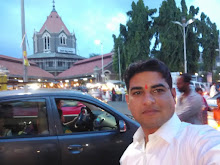
Among several styles of Indian paintings, miniature style is most significant. Miniature school of painting was originated in the western valley of Himalaya in seventeenth century. But it flourished and greatly evolved under the patronage of Mughal emperors. Miniature style is characterized by the delicate brushwork and detailed illustration of even smallest of object shown.
Though some themes of miniature paintings were influenced by the stories of Ramayana, Mahabharata, Bhagwat Purana,Rasik Priya, Ras Manjari and other literary classics but the foremost theme used to be the Ragas or the musical codes of Indian classical music.
The colors used for these paintings were prepared from minerals, vegetables, precious stones, indigo, conch shells, pure gold and silver.
There are three primary sub genres of Indian Miniature Paintings- Mughal School, Rajput School and Deccan School. The Mughal Miniature Paintings have a strong and a definite narrative content. These brilliantly illustrated paintings glow as if illuminated from inside. The use of bold contrasts such as red, green, blue yellow is definitely a native influence. During the reign of Mughal emperor Jahangir, this style got more sophistication. They became more intricate and smaller and even the themes were picked very carefully. Mansoor, Abul Hasan, Daswant and Govardhan were the greatest painters of the Mughal Miniature Style.
The Rajput school of painting was marked by the themes of Lord Krishna and his leelas. The literature of Bhakti cult had influenced these paintings hugely. The emphasis used to be given on the love and other emotions, keeping Radha and Krishna at the center stage. These paintings are known for the aesthetic depiction of various love acts of the divine couple. Rajput Miniature painters mainly used vegetable and mineral dyes. Notable painters of this school were Keshav Das and Bhanudutt.
Pesian and Turkish painting traditions seem to have influenced the Deccan School of Painting to a great extent. This school of painting bloomed in Ahmadnagar, Bijapur, Golconda, and Aurangabad. The union of these styles with indigenous traditions produced a fascinating hybrid. Some interesting fields where this school of painting was applied were Husayan Shahi Manuscript, Ragamala, Nujum al-Ulam, Portraits of Sultan Ibrahim Adil Shah II and Kulliyat from Golconda.
Miniature school of paintings was an accomplished art form as well as the most authentic resource of its times. Indian culture is made rich an prosperous having these mighty traditions and arts.
For more information see the article: http://www.ethnicpaintings.com/indian_painting_styles/miniature/index-1.html
Though some themes of miniature paintings were influenced by the stories of Ramayana, Mahabharata, Bhagwat Purana,Rasik Priya, Ras Manjari and other literary classics but the foremost theme used to be the Ragas or the musical codes of Indian classical music.
The colors used for these paintings were prepared from minerals, vegetables, precious stones, indigo, conch shells, pure gold and silver.
There are three primary sub genres of Indian Miniature Paintings- Mughal School, Rajput School and Deccan School. The Mughal Miniature Paintings have a strong and a definite narrative content. These brilliantly illustrated paintings glow as if illuminated from inside. The use of bold contrasts such as red, green, blue yellow is definitely a native influence. During the reign of Mughal emperor Jahangir, this style got more sophistication. They became more intricate and smaller and even the themes were picked very carefully. Mansoor, Abul Hasan, Daswant and Govardhan were the greatest painters of the Mughal Miniature Style.
The Rajput school of painting was marked by the themes of Lord Krishna and his leelas. The literature of Bhakti cult had influenced these paintings hugely. The emphasis used to be given on the love and other emotions, keeping Radha and Krishna at the center stage. These paintings are known for the aesthetic depiction of various love acts of the divine couple. Rajput Miniature painters mainly used vegetable and mineral dyes. Notable painters of this school were Keshav Das and Bhanudutt.
Pesian and Turkish painting traditions seem to have influenced the Deccan School of Painting to a great extent. This school of painting bloomed in Ahmadnagar, Bijapur, Golconda, and Aurangabad. The union of these styles with indigenous traditions produced a fascinating hybrid. Some interesting fields where this school of painting was applied were Husayan Shahi Manuscript, Ragamala, Nujum al-Ulam, Portraits of Sultan Ibrahim Adil Shah II and Kulliyat from Golconda.
Miniature school of paintings was an accomplished art form as well as the most authentic resource of its times. Indian culture is made rich an prosperous having these mighty traditions and arts.
For more information see the article: http://www.ethnicpaintings.com/indian_painting_styles/miniature/index-1.html



1 comment:
gud post! well written, keep it up...
Post a Comment